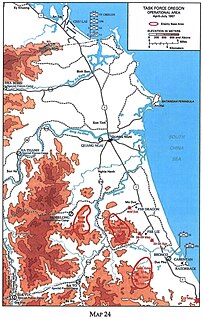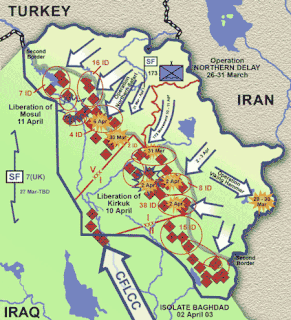 W
WThe 41st Infantry Division was a division of the Philippine Army under the United States Army Forces in the Far East (USAFFE).
 W
WTask Force 1-41 Infantry was a U.S. Army heavy battalion task force which took part in the Gulf War of January – March 1991. Task Force 1-41 Infantry was the first coalition force to breach the Saudi Arabian border on 15 February 1991 and conduct ground combat operations in Iraq engaging in direct and indirect fire fights with the enemy on 17 February 1991. It was the spearhead of VII Corps. It consisted primarily of the 1st Battalion, 41st Infantry Regiment, 3rd Battalion, 66th Armor Regiment, and the 4th Battalion, 3rd Field Artillery Regiment all being part of the 2nd Armored Division (Forward), based at Lucius D. Clay Kaserne, 24 kilometres (15 mi) north of Bremen, in the Federal Republic of Germany. Task Force 1-41 was commanded by Lieutenant Colonel James L. Hillman.
 W
WTask Force Baum was a secret and controversial World War II task force set up by U.S. Army general George S. Patton and commanded by Capt. Abraham Baum in late March 1945. Baum was given the task of penetrating 50 miles (80 km) behind German lines and liberating the POWs in camp OFLAG XIII-B, near Hammelburg. Controversy surrounds the true reasons behind the mission, which most likely was to liberate Patton's son-in-law, John K. Waters, taken captive in Tunisia in 1943. The result of the mission was a complete failure; of the roughly 300 men of the task force, 32 were killed in action during the raid and only 35 made it back to Allied-controlled territory, with the remainder being taken prisoner. All of the 57 tanks, jeeps, and other vehicles were lost.
 W
WTask Force ODIN, whose name is an acronym for observe, detect, identify, and neutralize, is a United States Army aviation battalion created in August 2006 to conduct reconnaissance, surveillance and target acquisition (RSTA) operations to combat insurgent operators of improvised explosive devices in Iraq.
 W
WTask Force Oregon, was a United States Army division-sized unit composed of 3 separate infantry brigades, active in Quảng Ngãi and Quảng Tín Provinces, South Vietnam from April to September 1967 when it was redesignated the 23rd Infantry Division (Americal).
Task Force Sinai is the US regiment-sized element of the Multinational Force and Observers ("MFO"), the peacekeeping organization in place in the Sinai Peninsula since 1982. The Task Force commander is a US Army colonel, who also serves as the MFO Chief of Staff. The Task Force commander utilizes American forces to support and achieve the overall observe and report mission of the MFO.
 W
WCombined Joint Special Operations Task Force – North (CJSOTF–N), also known as Task Force Viking, was the U.S. joint task force responsible for the northern front during the initial period of the 2003 invasion of Iraq. It secured Kirkuk, Mosul, and the northern oil fields; prevented 13 Iraqi Army divisions from defending Baghdad or reinforcing defensive operations against American and British troops advancing in the south, and thwarted Turkish efforts to subvert Kurdistan. Task Force Viking conducted artillery observer, direct action, special reconnaissance, and unconventional warfare missions in order to disrupt and fix Iraqi forces arrayed along the "Green Line", the nominal 1991 demarcation line between the Kurdish northern provinces of Iraq and the remainder controlled by Saddam Hussein. The original campaign for northern Iraq and the Task Force were ended on 12 May 2003.